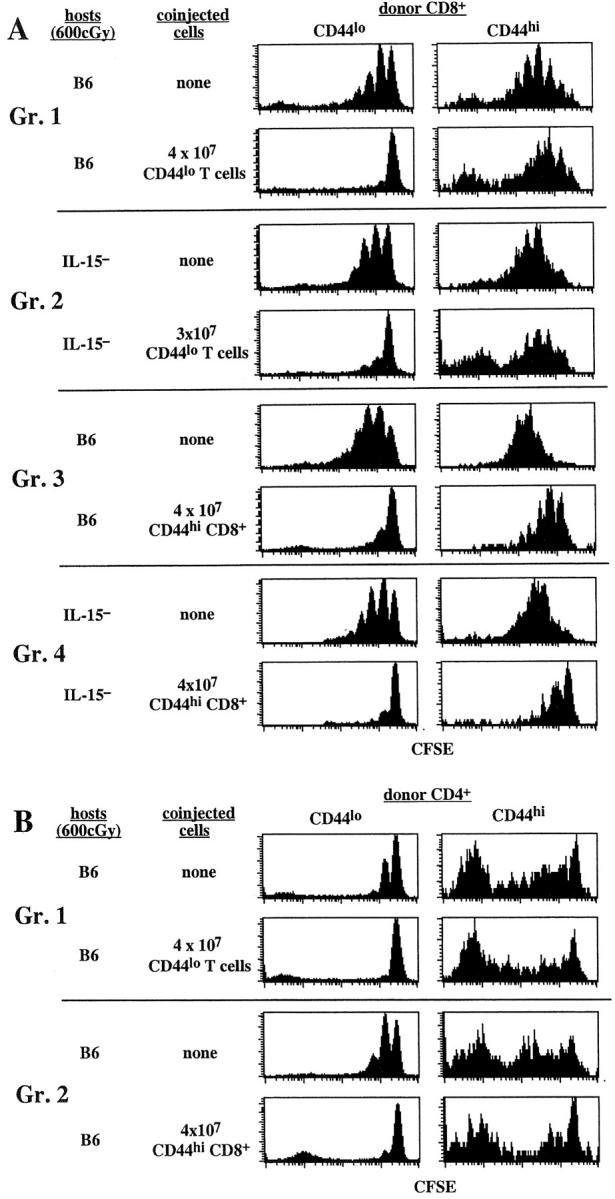Figure 5.

Competition between naive and memory phenotype T cells for factors driving homeostatic proliferation. (A) Coinjection of large numbers of CD44lo T cells fails to inhibit homeostatic proliferation of CD44hi CD8+ cells, but coinjection of large numbers of CD44hi CD8+ cells blocks homeostatic proliferation of CD44lo T cells. A mixture of CFSE-labeled sorted B6.Ly 5.1+ CD44lo T cells (106 cells per mouse) and B6.PL CD44hi T cells (106 cells per mouse) was injected into a group of irradiated (600 cGy) B6 or B6.IL-15− mice. Half of the hosts were then injected with a large number (3–4 × 107) of magnetic bead-purified B6 CD44lo T cells or CD44hi CD8+ cells obtained as described in Materials and Methods. CD44hi CD8+ cells were obtained from B6.IL-7 transgenic mice. Donor cells in the host LN and spleen were examined 7 d later. Shown are CFSE profiles on gated donor CD44lo and CD44hi CD8+ cells. Note that each group represents separate experiments; hence, representative control proliferations of CFSE-labeled donor cells in the absence of coinjected bystander cells is shown for each group. Results are representative of two to three independent experiments. (B) Failure of bystander naive T cells or CD44hi CD8+ cells to diminish proliferation of CD44hi CD4+ cells. Representative data on gated donor CD44lo and CD44hi CD4+ cells from some of the experiments described in A are shown.
